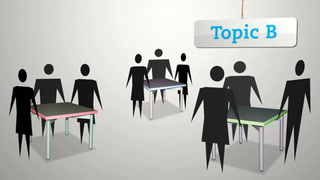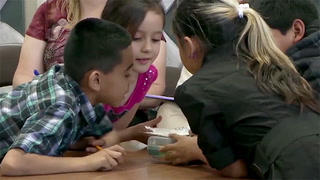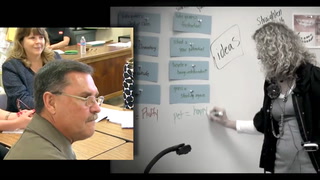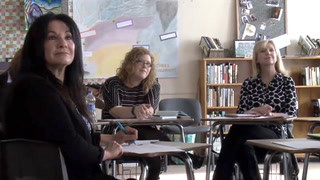Series Sarah Brown Wessling's Visit to Tulare County Schools: The Stand-Up Game: A Classroom Strategy
Save to My Resources
PLEASE CREATE A NEW ACCOUNT OR LOG IN TO ACCESS THIS CONTENT
Enjoy your first video for free. Subscribe for unlimited access.
Have questions about subscribing?
Click Here to learn more about individual subscriptions.
Click Here to learn more about School and Institution access.
Discussion and Supporting Materials
Thought starters
- How does Ms. Wessling make this game a low-stakes activity?
- How does this game promote active listening and participation?
- Ms. Wessling says she often uses this game for her early morning classes. When might you use this game in your own classroom?
Teachers
Sarah Brown Wessling
English Language Arts / 10 11 12 / Teacher
Newest
|
4 MIN
|
5 MIN
|
5 MIN
UNCUT CLASSROOMS
| TCHERS' VOICE
English Language Arts
















87 Comments
Julieta Newland Aug 23, 2022 12:00am
I like the idea of this game and will definitely use it for my Spanish language reviewing verbs, and vocabulary ....great tip.
Thank you
Julio Jacobo-Ma... May 7, 2020 10:12pm
Ms. Wessling uses a very fun activity to get the class started. This strategy will be great for early in the morning as well as for the after-lunch class. Usually our kiddos come back tired and sleepy after lunch, therefore an activity like this will be great to get them energize and ready to learn. A lot of times we tend to ask for volunteers when it comes down to class participation and we usually get the same student raising their hand. I started calling students randomly instead of asking for volunteers. When students don’t know the answer, he/she is allowed to ask a friend for help but I still ask for that student to report back to the class. That way they do not opt-out from participating.
Aundrea Gamble Apr 21, 2020 10:18pm
1. How does Ms. Wessling make this game a low-stakes activity?
Ms. Wessling doesn't pressure any student to participate. More than likely the students will start participating on their own. Instead of trying to get someone to raise their hand, the students are already standing which flips the students participation.
2. How does this game promote active listening and participation?
This game promotes active listening and participation simply by snapping their fingers after someone reads. It shows that you are paying attention to the reader along with showing your teacher you are participating.
3. Ms. Wessling says she often uses this game for her early morning classes. When might you use this game in your classroom?
I would use this game in my early morning classes as well.
Jacob Walter Nov 13, 2019 2:30pm
With this method you are giving your classroom the insentive and choice that if they share a piece of information with the class they are able to take a seat at their desk. This not only keeps people awake and focused on what their classmate is saying but also helps to reinforce information learned in previous classes.
Gillann Mae Buena Nov 12, 2019 11:51pm
I like this concept of reversing the way the students should be engaged in the classroom. The teacher is not forcing anyone to talk, but it does give everyone the equal opportunity to share because their main goal is to sit down. It not only wakes up the students, but uses reverse pychology on the students. Typically, students hate to share their thoughts or answers, but with this game they would hate to be the only one standing or not sharing. I can see teachers modifying this for thier classrooms and fitting it for the needs of their students.